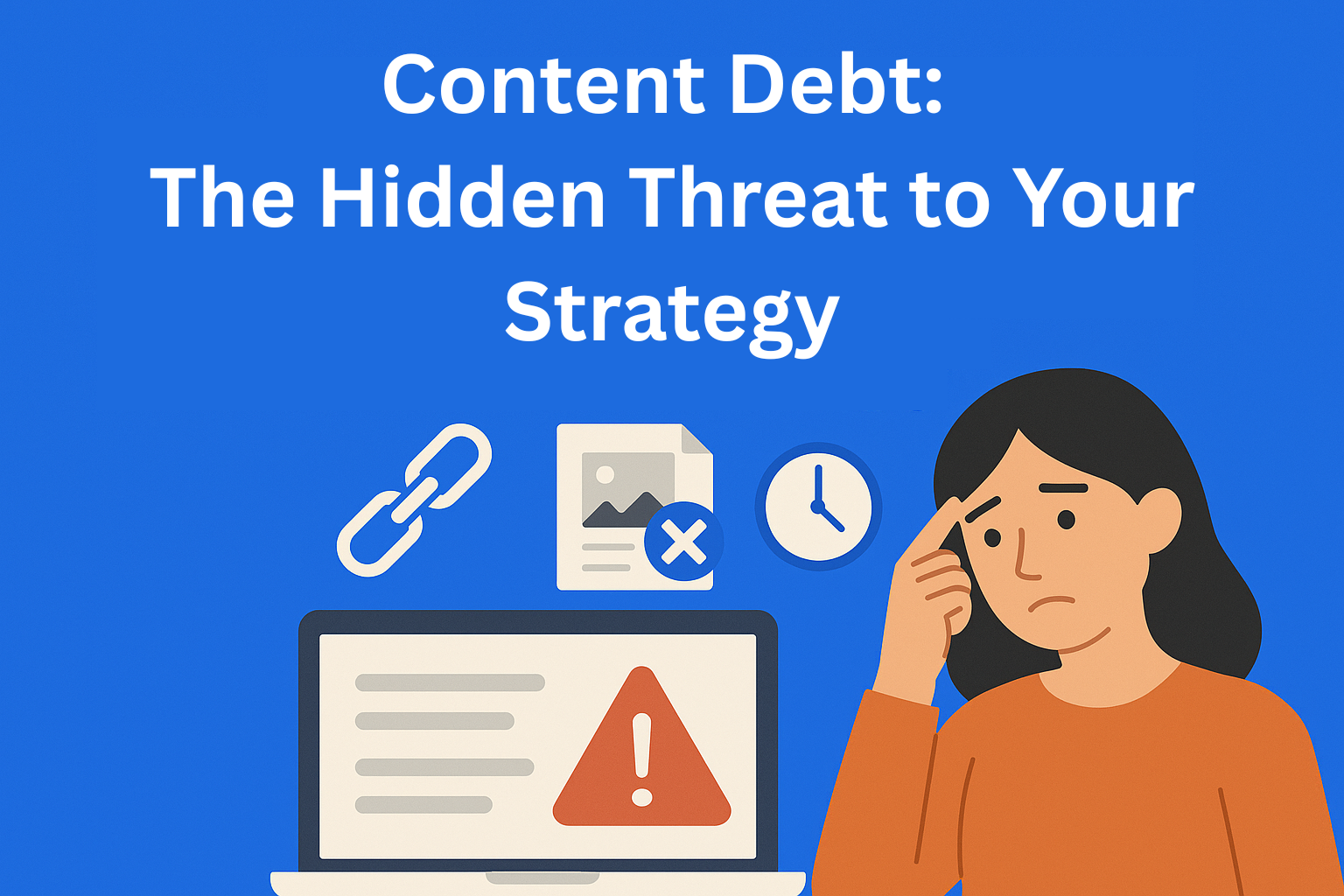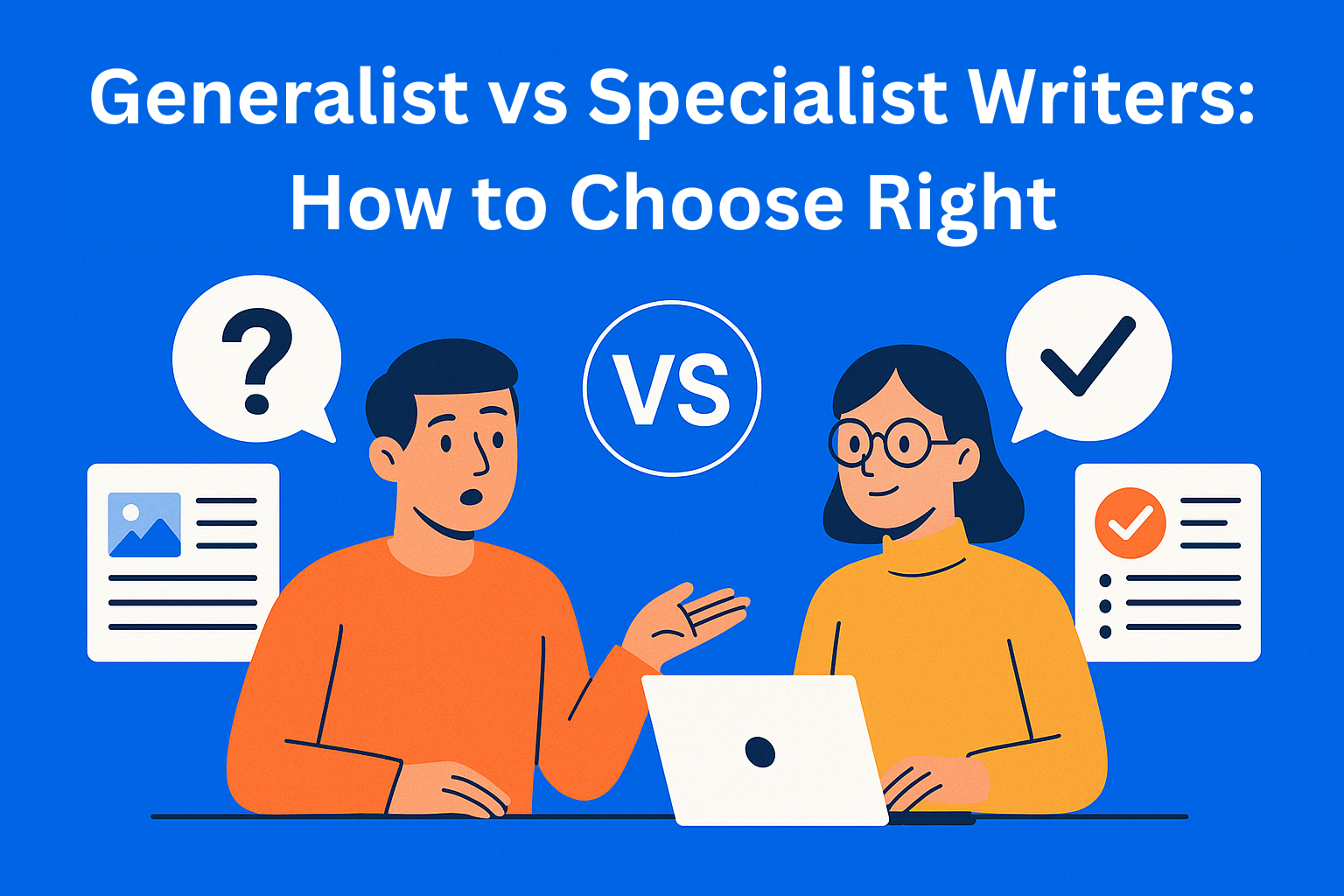Content “Debt”: How Ignoring Minor Updates Can Hurt Your Strategy Long-Term
Content debt builds slowly - outdated links, old stats, inconsistent tone. This blog shows how small missed updates compound over time and how regular audits keep your strategy sharp and trustworthy.

Every team knows about technical debt - the small issues you postpone until they snowball into big problems. But few talk about its quieter twin: content debt.
Content debt builds when you skip those “I’ll fix it later” updates. Outdated stats. Broken links. Old screenshots. Inconsistent tone between pages. None of them are fatal individually, but together, they quietly erode trust, SEO value, and workflow efficiency.
And the worst part? By the time you notice it, you’re already behind.
Key Takeaways
- Content debt is the hidden twin of technical debt - it grows quietly through outdated links, old data, and tone inconsistencies that slowly erode trust and SEO strength.
- The impact compounds over time - neglected content reduces visibility, confuses readers, and wastes resources as teams repeatedly recheck old materials.
- Early warning signs are easy to miss - hesitation to share links, slower editing cycles, and style drift across channels all signal rising content debt.
- Systematic upkeep prevents costly overhauls - scheduled audits, clear ownership, and consistent documentation keep your content library reliable and current.
- EasyContent helps control content debt - with built-in review cycles, reusable templates, and centralized guidance, teams can maintain consistency and freshness at scale.
What Content Debt Actually Looks Like
Content debt doesn’t usually scream for attention - it just lingers.
You’ll see it in places like:
- A blog post still linking to a 2021 report
- Old CTAs pointing to retired offers
- Slightly mismatched product descriptions across pages
- A tone that doesn’t reflect your current brand voice
- A style guide that everyone “kind of” follows
Each instance seems harmless. But when multiplied across dozens (or hundreds) of assets, the result is an ecosystem full of friction - both for your audience and your internal team.
Why Content Debt Hurts More Than You Think
The consequences sneak up on you.
Content debt creates hidden inefficiencies that compound over time:
1. SEO decay
Outdated info signals to search engines that your site isn’t being maintained - even if your new posts are excellent.
2. Brand inconsistency
If half your content sounds confident and the other half sounds like 2018, readers feel the mismatch immediately.
3. Lost audience trust
Broken links and outdated claims make people wonder what else you’ve overlooked.
4. Workflow drag
Writers spend more time checking old content for accuracy instead of creating new, high-impact pieces.
Neglect turns into noise, and noise kills focus.
How to Spot Early Signs of Content Debt
You can usually sense content debt before it becomes unmanageable.
Keep an eye out for these subtle signals:
- You hesitate to share certain pages because they “need a refresh.”
- Edits take longer because everyone’s afraid to touch outdated assets.
- Style and tone drift across channels.
- Teams ask the same questions about “what’s up-to-date.”
- Analytics show content decay - declining engagement despite stable traffic.
If you see two or more of these happening simultaneously, you’ve got a backlog forming.
How to Start Paying Down Content Debt
No, you don’t need a full site overhaul.
You just need a structured cleanup plan.
Here’s a practical way to start:
- Run a content audit.
List all live assets (pages, blogs, guides, videos). Note which are outdated, redundant, or inconsistent. - Prioritize by impact.
Focus on high-traffic or conversion-driving content first - that’s where the ROI of updates is highest. - Set review cycles.
Build quarterly or biannual review checkpoints into your content calendar. Don’t rely on “when we have time.” - Assign ownership.
Every piece of content should have a name attached - even if it’s just for updates. Shared responsibility = no responsibility. - Document updates.
Track what’s changed and when. This helps avoid re-introducing outdated info later.
A system beats a sprint every time.
How EasyContent Helps Keep Your Library Debt-Free
Cleaning up is one thing - staying clean is another.
That’s where EasyContent helps teams stay ahead of content debt instead of constantly catching up.
With customizable templates, built-in review stages, and centralized guidelines, EasyContent ensures updates don’t fall through the cracks. Writers see what needs updating right inside the editor, and managers can assign tasks without sending 10 follow-up messages.
You can even standardize how recurring content types (like product updates or blog refreshes) are structured, so every revision feels consistent - not like reinventing the wheel.
Conclusion
Content debt doesn’t explode overnight - it seeps in quietly until your content library becomes a maze of outdated pages and inconsistent messaging. The fix isn’t heroic overhauls; it’s small, steady maintenance.
Audit what you have, refresh what matters most, and make updates part of your routine, not your rescue plan. When your team uses structured tools like EasyContent to bake reviews and clarity into the workflow, staying current stops being extra work - it becomes the normal way you operate.
That’s how you turn “we’ll fix it later” into “it’s already handled.”






